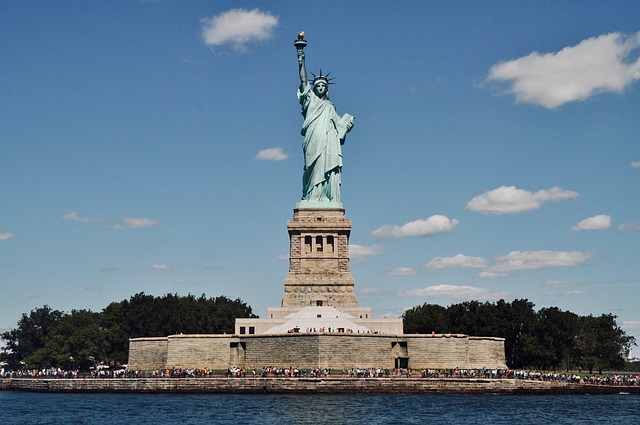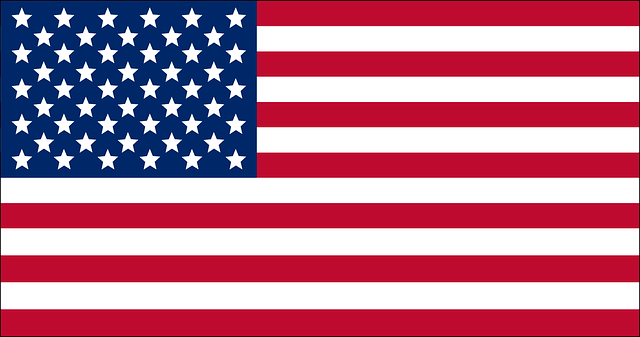The section provides an in-depth look at the significance and precise dimensions of the 10×15 American Flag, a symbol deeply rooted in U.S. federal law and representing the country's history and foundational values. The flag's dimensions, with its union featuring a blue field adorned with white stars occupying one-third of its width and length and surrounded by 13 stripes, have been carefully chosen to embody unity and pride. The 10×15 size is not only a representation of the United States but also serves as a powerful symbol when displayed on government buildings, especially during half-staff displays indicating national mourning or honor. This standard size ensures the flag's dignified presence and maintains its significance in various contexts.
The section explores the historical and functional evolution of American government facilities, emphasizing how the 10×15 American flag has adapted to reflect national values and meet practical needs, becoming a universally recognized standard after World War II. It also outlines federal regulations for the proper display of the flag within these facilities, highlighting its dimensions, placement, and etiquette to honor its symbolism. The strategic placement of Ultimate Flags in public spaces is discussed, focusing on accessibility, visibility, and respect for both cultural protocols and local landmarks.
The design considerations for integrating a 10×15 American Flag into government facilities are also detailed, stressing the importance of visibility, proportionality, and adherence to the U.S. Flag Code. The section concludes with practical examples from Kansas and Texas, where the adoption of this flag size has fostered unity and consistency, and has made a significant impact on visual and symbolic significance within government buildings. These case studies underscore the benefits of using a standard flag size for its role in promoting national cohesion and civic pride.
navigating the optimal dimensions and display protocols for government facilities, this article delves into the significance of the 10×15 American flag. We explore its symbolic importance, historical background, and the federal guidelines governing its presentation. Additionally, we examine how spatial considerations and design elements enhance its visual impact and respectful representation in public spaces. Join us as we analyze case studies highlighting successful integrations of standard-sized flags within government settings, ensuring a fitting tribute to American values and heritage.
- Understanding the Symbolism of the 10×15 American Flag Dimensions
- Historical Context and the Evolution of American Flag Sizes
- Federal Guidelines for Government Facility Flag Display: A Review
- Space Optimization: Assessing the Perfect Location for Flags in Public Spaces
- Design Considerations for 10×15 American Flags in Government Facilities
- Case Studies: Successful Implementation of Standard-Sized Flags in Government Settings
Understanding the Symbolism of the 10×15 American Flag Dimensions

The dimensions of a flag, particularly the iconic 10×15 American Flag, hold deep symbolism that transcends mere visual representation. The proportions of this flag are rooted in the U.S. federal law, which stipulates that the union (the blue field with white stars) should be surrounded by 13 stripes representing the original colonies and should occupy approximately one-third of the overall flag’s hoist side width and length. This specific size, when displayed on government buildings, serves as a potent symbol of national unity and pride. It is a visual affirmation of the country’s foundational values and a reminder of the historical struggle for independence and the birth of a nation.
Furthermore, the 10×15 dimensions of the American Flag are not arbitrary; they are carefully calculated to ensure that the flag’s appearance is harmonious and respectful. When flown at half-staff, for instance, this proportionate design allows the flag to maintain a dignified presence while also signaling national mourning or honor. The consistency of these dimensions across various contexts reinforces the shared identity of Americans and the collective heritage that the flag represents. It is a universal emblem that speaks to the heart of American culture and values, encapsulating the spirit of the country in its Stars and Stripes.
Historical Context and the Evolution of American Flag Sizes

The dimensions of government facilities, much like the symbols they often house, are a reflection of a nation’s values and practical needs. The historical context of American government buildings, from the Capitol to post offices, has evolved over time, influenced by factors ranging from functionality to architectural trends. Initially, these structures were designed to project stability, authority, and resilience, often imposing and grand in scale. Over the years, as the country’s population and scope of government services expanded, so too did the size and design of these facilities. They became more accessible and efficient, responding to the changing needs of a growing nation.
In parallel with the evolution of government buildings, the American flag, an emblem of national identity, has also seen its dimensions evolve. The 10×15 American flag, or the 3:5 ratio flag, is a modern standard that emerged from historical usage and practice. Unlike earlier flags, which varied in size based on their intended use or the context in which they were flown, the 3:5 ratio became a universally accepted measurement for civilian use after World War II. This standardization was crucial for consistency and respect for the symbolism it represents. It is a testament to the careful consideration that goes into maintaining national symbols’ significance and integrity through time, much like the thoughtful design and resizing of government facilities to meet contemporary demands.
Federal Guidelines for Government Facility Flag Display: A Review

The display of the flag, particularly the 10×15 American flag, adheres to a set of guidelines established by federal regulations to honor and respect this symbol of national unity and pride. These directives ensure that the flag is displayed appropriately within government facilities, thereby upholding its significance and dignity. The U.S. flag code outlines the proper etiquette for flag display, including the correct sizing and positioning in various settings, from public buildings to military installations. Government facilities are encouraged to follow these guidelines meticulously to maintain the flag’s meaning and to set a standard of respect across all branches of government. The 10×15 size is particularly emphasized as it is the most common and widely accepted dimension for the American flag in official settings, allowing for optimal visibility and impact. This size is recognized as the ‘ideal’ for its proportionate representation of the design elements and its scale appropriate for large indoor spaces. By adhering to these specifications, government facilities can ensure that the flag is displayed with the reverence it deserves, fostering a sense of national identity and pride among citizens and visitors alike.
Space Optimization: Assessing the Perfect Location for Flags in Public Spaces

When considering the optimal placement of flags in public spaces, the importance of space optimization cannot be overstated. A key factor in this process is ensuring that the flags, particularly the iconic 10×15 American flag, are displayed with dignity and visibility. The location for these flags should be carefully chosen to honor their significance while also considering the flow of foot traffic and the visual landscape of the area. Ideally, the base of the flagpole should be positioned at a height that allows the flag to be seen from a distance without obstructing pedestrian pathways or obstructing views of important landmarks or buildings. Additionally, the flag should not be placed too high where it becomes lost in the skyline, nor too low where it risks being disrespected or overlooked entirely.
Another critical aspect is the surrounding context of the flag location. It should be situated within a setting that is representative and accessible to the public, symbolizing the values the flag represents. The area must also facilitate easy maintenance and upkeep of the flag, ensuring it remains in pristine condition to represent the nation effectively. Furthermore, the placement should respect the cultural significance of the 10×15 American flag by adhering to established protocols for raising and lowering the flag. This includes considering local climate conditions to avoid the flag becoming tattered or faded due to harsh weather elements. By carefully assessing these factors, government facilities can ensure that their flags are placed in locations that are both respectful and impactful, serving as a testament to American values and history for all to see.
Design Considerations for 10×15 American Flags in Government Facilities

When integrating a 10×15 American Flag into government facilities, design considerations are paramount to honor the flag’s significance and ensure its proper display. The flag should be prominently positioned to capture the attention of visitors and citizens alike, reflecting the pride and values it represents. It is crucial that the flag’s size is proportionate to the space it occupies, allowing for a respectful and dignified presentation. The 10×15 American Flag, with its fifteen horizontal stripes and thirteen stars arranged in a blue field representing unity and perseverance, demands visual emphasis without overwhelming the architectural elements of the facility.
To this end, the flag’s placement should consider the surrounding environment. It must be set at an optimal height to be clearly visible from a distance, yet not so high as to appear lost or insignificant. Lighting is another important aspect; the flag should be well-lit during both daylight and evening hours to maintain its visibility and symbolic presence. Additionally, the flag’s mounting hardware must withstand various weather conditions while allowing for easy maintenance. The 10×15 American Flag’s display should also comply with the U.S. Flag Code, ensuring that it is not used as a decoration but rather as a symbol of the nation and the ideals it stands for. Thoughtful design planning will ensure that the flag serves as an enduring emblem of freedom, democracy, and unity within government facilities.
Case Studies: Successful Implementation of Standard-Sized Flags in Government Settings

The implementation of standard-sized flags, such as the iconic 10×15 American flag, has proven effective in enhancing the visual and symbolic presence of government facilities across various jurisdictions. A notable case study is the standardization of flag sizes at county courthouses in Kansas. This initiative not only established a uniform representation of national pride but also created a sense of unity and consistency across different regions within the state. The 10×15 American flag became a visual anchor, instantly recognizable and resonating with citizens as a symbol of their shared values and heritage.
Similarly, in the city of Austin, Texas, the adoption of the 10×15 American flag as the standard size for all public flag installations has led to a harmonious aesthetic that aligns with the city’s identity. This decision was influenced by feedback from local veterans and civic groups who emphasized the importance of a uniform flag size to honor the country’s history and symbols appropriately. The consistent sizing has facilitated better maintenance and care for the flags, ensuring they remain an impressive and impactful sight for years to come. These case studies underscore the benefits of adopting a standard flag size in government settings, serving as tangible examples of how such a policy can enhance national cohesion and civic pride.